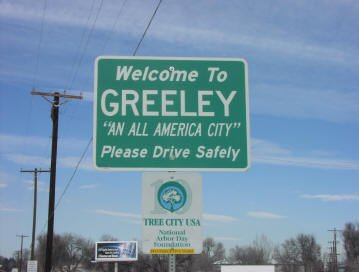By Jack Healy, The New York Times, June 9, 2013
GREELEY, Colo. — This is a town running on oil. From dawn till dusk, trucks carrying men and machinery rumble away for the oil and gas fields. New steakhouses and wine bars have popped up downtown. Energy companies help sponsor rodeos, blues concerts and other events. Tax revenues are surging.In the depths of the recession, a new wave of drilling took hold across farm fields and the high plains, helping to revive the city’s straggling economy. Unemployment is still stuck at 7.5 percent, but is down from highs of more than 10 percent. And local officials estimate that one in nine jobs is somehow tied to the drilling boom. Homes are selling again, and hotels are nearly full.
“We had better occupancy than Vail did during the ski season,” said Greeley’s mayor, Tom Norton.
But this spring, an energy company proposed sinking 16 wells next to a neighborhood of winding cul-de-sacs, pastel homes and the Family FunPlex recreation center. And in this energy-friendly town, an unlikely resistance was born.
“These wells are going to be here for a long time,” said Wendy Highby, a librarian at the University of Northern Colorado who joined a group of residents to oppose the project. “They’re what we’re leaving to our children.”
The wells in the Fox Run neighborhood on Greeley’s western fringe would hardly be the first ones drilled here. Energy companies have drilled in northern Colorado for more than three decades, and Greeley is ringed by about 20,000 oil and gas wells.
About 425 wells are tucked within the city limits, along roadsides and near industrial parks and commercial strips, and that number is expected to grow to 1,600 in coming years. Empty lots near strip malls are scheduled for drilling, and a vacant patch of grass near graduate-student housing on the city’s east side bears this sign: “Future Drilling Site.”
As companies here and across the energy-rich West look for new places to drill, they are increasingly looking toward more densely populated areas, and bumping into environmentalists and homeowners. In a study last year, the environmental advocacy group Western Resource Advocates found that 32 schools in northern Colorado were within 1,000 feet of a well.
“These cities are the last open bastions where they can drill,” said Mark Schreibman, who created a community group to oppose the drilling in Greeley. “They’re the only places left. Now they’re finding themselves under siege.”
As wells have sprouted in cities across northern Colorado, some towns have pushed for bans on the drilling technique known as fracking, in which highly pressurized water, sand and chemicals are pumped into the ground to crack open rock formations and pull out the minerals. Last week, the liberal college town of Boulder passed a one-year ban on fracking.
Others have embraced the boom’s royalty checks and tax payments, crediting drilling for the new grocery store in Platteville, the huge lunch crowds in Ault or the reopened Tumble Weed Café in Nunn.
Greeley and drilling have a complicated history. In the mid-1980s, the city banned drilling inside its borders, a move that was overturned by Colorado’s highest court after a long and expensive legal battle with energy companies. Since then, the city has passed rules to manage drilling and has learned to coexist with the industry, and even embrace it.
Last year, Greeley collected $3.3 million from oil and gas operations, and it estimates that energy production will generate $429 million in tax revenue over the next 25 years. The University of Northern Colorado and school districts inside Greeley have leased out their drilling rights, and this spring huge “thumper trucks” rolled through the streets, sending seismic jolts deep into the ground to see where mineral deposits might lie.
This winter, when Colorado’s oil and gas commission passed new rules requiring 500-foot setbacks between new wells and homes, Mayor Norton publicly opposed the changes. He argued that they would hurt development and city planning and would undermine local governments.
Last year, a drilling rig rose like a beanstalk about 1,000 feet from Mr. Norton’s home. The nights were filled with clanking and thudding as trucks came and went and as workers bored into the ground and pumped fracking fluid into the well. It was not bliss, he said, but he and his neighbors got by.
“It’s not that you want them there,” he said, “but you’ve got to put them someplace.”
Residents are fiercely divided on that point. At a packed meeting last month to discuss the drilling project in Fox Run, some spoke in favor of the economic benefits of oil and gas development. Dozens of others urged city officials to reject the proposal, saying the flurry of new wells would forever damage their city of parks and walking paths.
Logan Richardson, the vice president of the energy company Mineral Resources, promised to do everything possible to keep the noise down and mask the drilling near Fox Run. He said the company would build a fence and plant trees and was making extensive efforts to protect the environment around the well sites.
Despite strong public objection, city officials unanimously approved the new wells. And now, inside the house that she and her husband built six years ago, Karen Janata is bracing for what comes next. The couple moved to Greeley from Illinois to be close to their children and grandchildren, and loved their home’s mountain views and sunny suburban charm. She wonders whether all that will survive after the drilling rigs arrive.
“I’m just devastated by this,” Ms. Janata said. “I would move out of Greeley tomorrow if I could.”

No comments:
Post a Comment